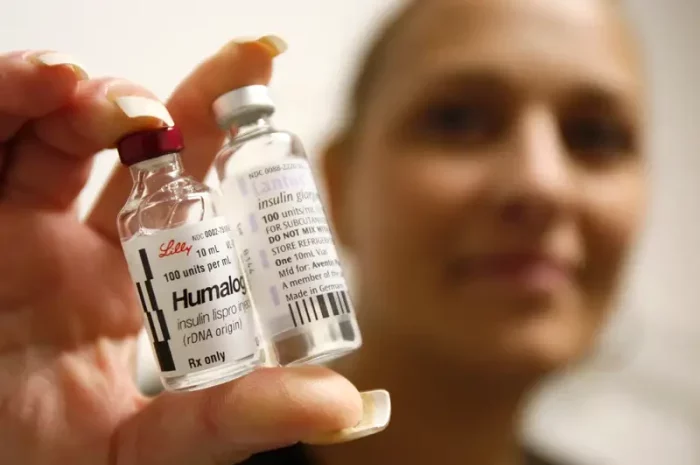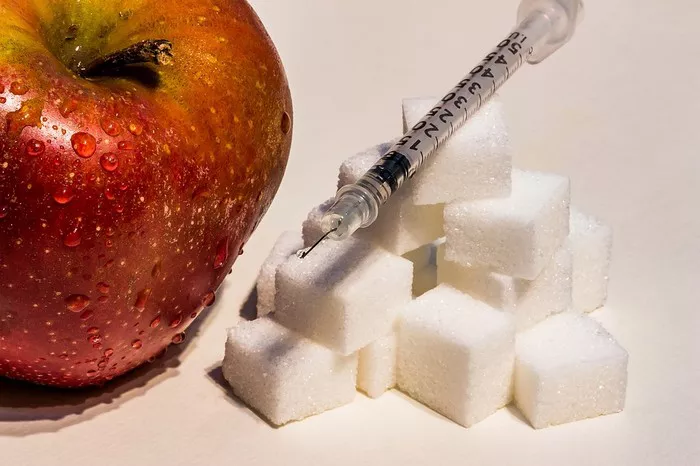Hypoglycemia, characterized by abnormally low blood glucose levels, is a significant concern in the management of diabetes. The American Academy of Pediatrics (AAP) has established guidelines to help healthcare professionals and caregivers effectively prevent, identify, and manage hypoglycemia, particularly in pediatric patients. These guidelines are crucial for ensuring optimal diabetes management and minimizing the risk of complications associated with low blood sugar. This article provides a thorough examination of the AAP guidelines for hypoglycemia, including its causes, symptoms, diagnostic criteria, and management strategies.
Understanding Hypoglycemia
Hypoglycemia occurs when blood glucose levels fall below the normal range, typically defined as less than 70 mg/dL. This condition can result from various factors, including medication errors, dietary imbalances, or underlying health issues. It is particularly common in individuals with diabetes who are on insulin or other glucose-lowering medications.
Causes of Hypoglycemia
The causes of hypoglycemia can be categorized into several groups:
Medication-Related Causes:
Insulin Overdose: Excessive insulin administration can lead to a drop in blood glucose levels.
Sulfonylureas: These oral hypoglycemic agents stimulate insulin release from the pancreas, which can cause hypoglycemia, especially if meals are skipped or delayed.
Insulin Secretagogues: Medications that increase insulin secretion can also result in hypoglycemia.
Dietary Causes:
Inadequate Food Intake: Skipping meals or not consuming enough carbohydrates can cause low blood sugar.
Imbalanced Meals: Meals with inadequate carbohydrates or too much protein or fat without sufficient carbohydrates can contribute to hypoglycemia.
Physical Activity:
Increased Exercise: Strenuous or prolonged physical activity can increase glucose uptake by muscles, leading to hypoglycemia if not balanced with appropriate food intake or insulin adjustment.
Alcohol Consumption:
Alcohol: Drinking alcohol, especially without eating, can interfere with glucose production in the liver and lead to hypoglycemia.
Medical Conditions:
Adrenal Insufficiency: Inadequate adrenal hormone production can affect glucose regulation.
Renal Impairment: Reduced kidney function can alter insulin metabolism and glucose balance.
Symptoms of Hypoglycemia
Recognizing hypoglycemia is critical for timely intervention. Symptoms can vary from mild to severe and include:
Mild Symptoms: Shakiness, sweating, hunger, irritability, and difficulty concentrating.
Moderate Symptoms: Confusion, dizziness, rapid heartbeat, blurred vision, and weakness.
Severe Symptoms: Loss of consciousness, seizures, and coma.
AAP Guidelines for Hypoglycemia
The AAP guidelines for hypoglycemia emphasize a comprehensive approach to prevention, detection, and management. These guidelines are designed to ensure that healthcare professionals, caregivers, and patients can effectively address hypoglycemia and maintain optimal blood glucose control.
1. Prevention of Hypoglycemia
Preventing hypoglycemia involves proactive measures to manage blood glucose levels effectively:
Education and Training: Educate patients and caregivers about the signs and symptoms of hypoglycemia, appropriate glucose monitoring, and emergency response strategies. Training should include practical skills for glucose testing and insulin administration.
Meal Planning: Ensure balanced meals and snacks that include adequate carbohydrates to prevent hypoglycemia. Adjust meal plans based on activity levels and insulin doses.
Medication Management: Review and adjust medications as needed to avoid hypoglycemia. This includes monitoring insulin doses and oral hypoglycemic agents.
Physical Activity: Advise patients on how to adjust insulin doses or carbohydrate intake based on exercise levels. Encourage regular physical activity while providing guidance on managing glucose levels during and after exercise.
Alcohol Consumption: Provide guidelines on safe alcohol consumption, emphasizing the importance of consuming alcohol with food to prevent hypoglycemia.
Monitoring and Adjustment: Regularly monitor blood glucose levels and adjust treatment plans based on patterns and trends. Implement continuous glucose monitoring (CGM) systems if appropriate.
2. Identification and Diagnosis
Accurate identification and diagnosis of hypoglycemia are crucial for effective management:
Blood Glucose Monitoring: Perform regular blood glucose tests to detect hypoglycemia early. Use glucometers or CGM systems to monitor glucose levels, especially before and after meals, physical activity, and bedtime.
Diagnostic Criteria: According to the AAP guidelines, hypoglycemia is defined as a blood glucose level below 70 mg/dL. In the context of diabetes management, symptoms and glucose measurements should be considered together for diagnosis.
Differential Diagnosis: Rule out other potential causes of symptoms that may mimic hypoglycemia, such as electrolyte imbalances, infections, or neurological conditions.
3. Management Strategies
Effective management of hypoglycemia involves prompt and appropriate intervention:
Mild Hypoglycemia: For blood glucose levels between 60-70 mg/dL with mild symptoms, consume 15-20 grams of fast-acting carbohydrates (e.g., glucose tablets, fruit juice). Recheck blood glucose levels after 15 minutes and repeat treatment if needed.
Moderate Hypoglycemia: For blood glucose levels below 60 mg/dL with moderate symptoms, follow the same approach as for mild hypoglycemia. If symptoms persist or worsen, seek medical assistance.
Severe Hypoglycemia: For severe hypoglycemia with symptoms such as loss of consciousness or seizures, administer glucagon as prescribed and seek emergency medical help immediately. Family members and caregivers should be trained in glucagon administration.
Emergency Response: Develop and follow an emergency response plan for severe hypoglycemia. Ensure that individuals with diabetes and their caregivers know how to use glucagon kits and when to seek emergency medical care.
Post-Hypoglycemia Care: After managing an episode of hypoglycemia, assess the underlying cause and adjust treatment plans as necessary. Follow up with healthcare providers to review and refine diabetes management strategies.
4. Long-Term Management
Long-term management involves ongoing strategies to reduce the risk of recurrent hypoglycemia:
Regular Follow-Up: Schedule regular follow-up appointments with healthcare providers to review blood glucose patterns, medication adjustments, and overall diabetes management.
Education and Support: Continue providing education and support to patients and caregivers regarding hypoglycemia management, lifestyle adjustments, and ongoing monitoring.
Technology Integration: Utilize advanced diabetes management technologies, such as CGM systems and insulin pumps, to enhance glucose monitoring and insulin delivery.
Lifestyle Modifications: Encourage and support lifestyle modifications, including healthy eating, regular exercise, and stress management, to improve overall glucose control and reduce hypoglycemia risk.
Case Studies and Practical Applications
To illustrate the application of AAP guidelines in real-world scenarios, consider the following case studies:
Case Study 1: A Young Athlete with Type 1 Diabetes
A 12-year-old athlete with Type 1 diabetes experiences frequent hypoglycemic episodes during and after soccer practice. Following AAP guidelines, the patient’s diabetes team implements a comprehensive management plan:
Education: The patient and their family receive training on recognizing early signs of hypoglycemia and adjusting insulin doses based on activity levels.
Meal Planning: A tailored meal plan includes pre-exercise snacks with appropriate carbohydrates to maintain stable blood glucose levels.
Monitoring: Continuous glucose monitoring (CGM) is introduced to provide real-time glucose data and alerts for hypoglycemia.
As a result, the frequency of hypoglycemic episodes decreases, and the patient can participate more safely in sports activities.
Case Study 2: An Adult with Type 2 Diabetes and Inadequate Hypoglycemia Management
An adult with Type 2 diabetes experiences recurrent hypoglycemia due to insulin therapy and dietary imbalances. Following AAP guidelines:
Medication Review: The healthcare provider reviews and adjusts the patient’s insulin regimen to reduce the risk of hypoglycemia.
Dietary Counseling: A registered dietitian works with the patient to develop a balanced meal plan and address dietary habits contributing to hypoglycemia.
Emergency Plan: The patient and their family are trained in the use of glucagon and emergency response procedures.
The patient reports improved glucose control and fewer hypoglycemic episodes, enhancing their overall quality of life.
See also: What Goes Wrong When Juvenile Diabetes Sets In
Conclusion
The AAP guidelines for hypoglycemia provide a comprehensive framework for the prevention, identification, and management of low blood sugar levels. By understanding the causes of hypoglycemia, recognizing symptoms, and implementing effective management strategies, healthcare professionals, caregivers, and individuals with diabetes can improve diabetes care and minimize the risk of complications.
Adherence to these guidelines, coupled with ongoing education, monitoring, and lifestyle adjustments, is essential for achieving optimal diabetes management and ensuring the well-being of patients. Continued advancements in diabetes care and technology will further enhance the ability to manage hypoglycemia effectively and improve the quality of life for individuals living with diabetes.
Related topics:



























